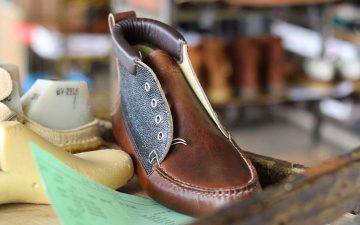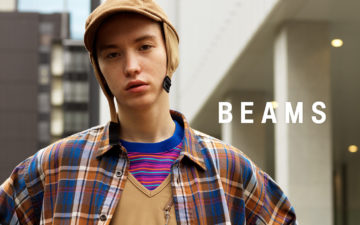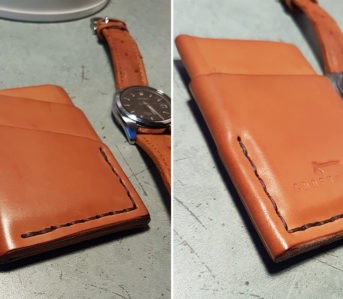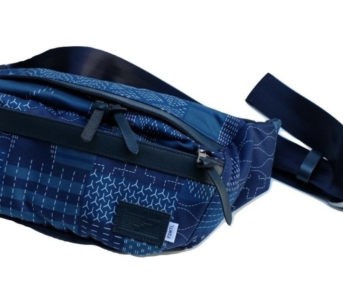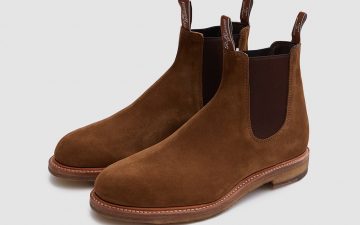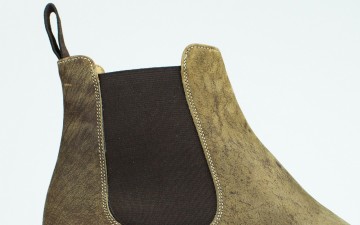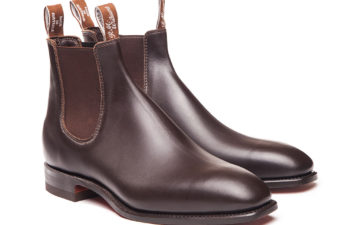It’s safe to say that Australia isn’t the boot capital of the world, but one there’s one iconic brand that wouldn’t call anywhere else home. For over 80 years, R.M. Williams has been known across the world for its high-quality, handmade leather boots, as well as a range of apparel and accessories inspired by the Australian outback.
The History and Philosophy of R.M. Williams
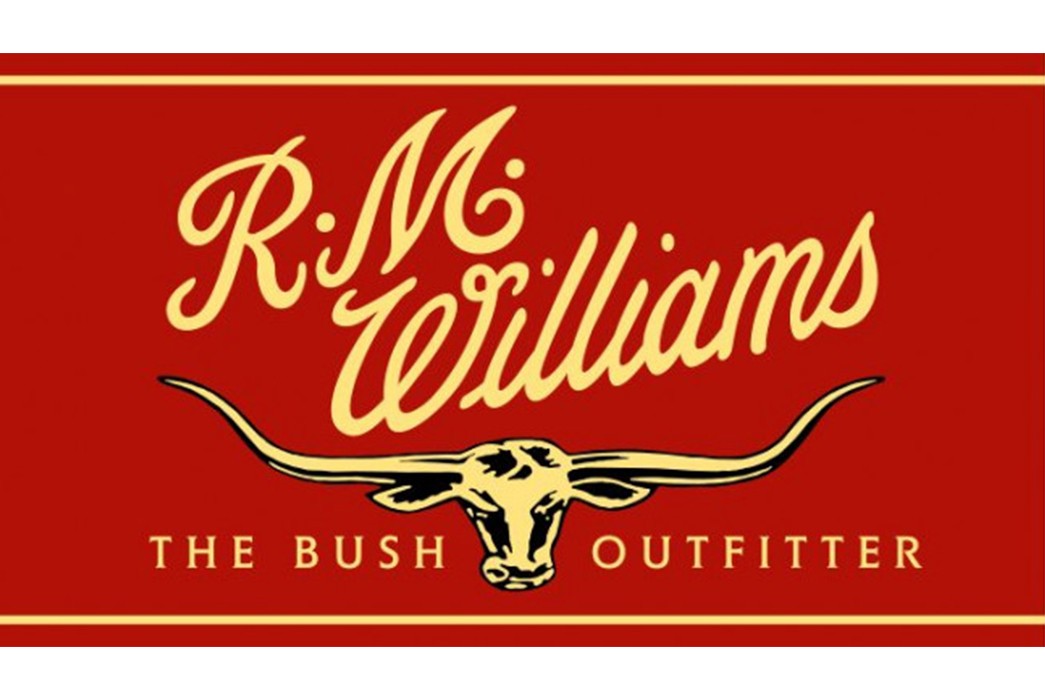
The R.M. Williams story is synonymous with the life of its founder, Reginald Murray Williams (known simply as ‘R.M.’). Born in 1908, in the small Australian locality of Balelie North, R.M. grew up in the outback, his father a settler and horse trainer.
In 1918, R.M.’s family relocated to Adelaide, South Australia, in search of an education for young R.M. and his two sisters, but R.M. despised the move and struggled to settle into the education system. After sticking it out for three years, he left school at the age of 15 and return to the Australian bush—a challenging environment he’d grown to love.
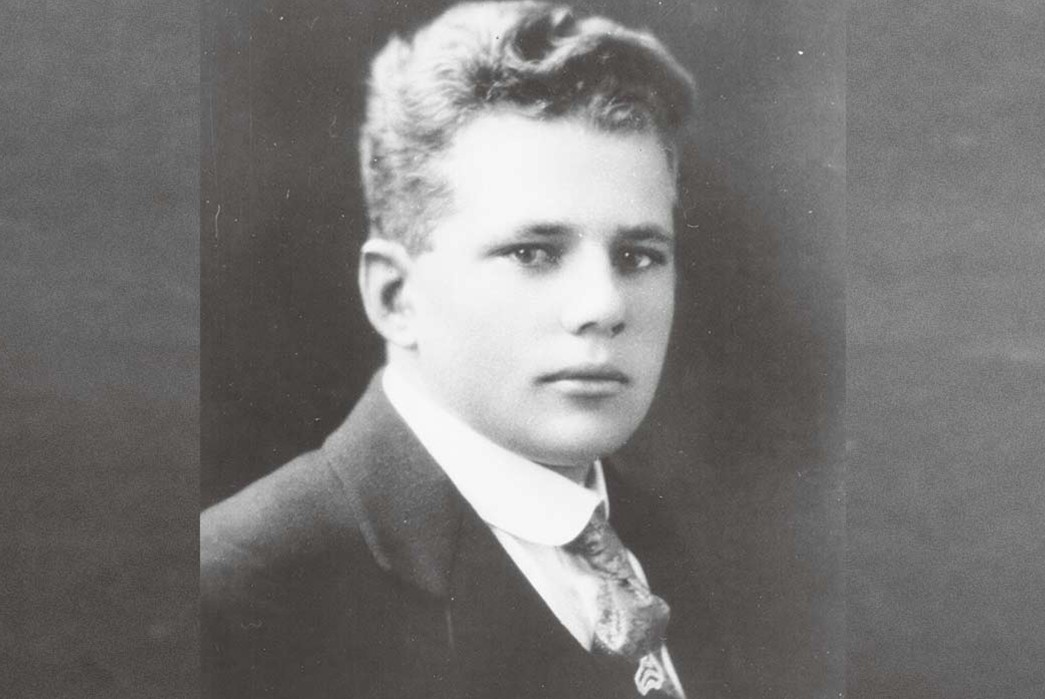
A young Reginald Murray Williams. Image via R.M Williams.
Traveling back towards the north of Australia, R.M. sought and found manual work in the outback, and used the light of the campfire at night to study books and improve his reading skills. Literature gave him a sense of wanderlust, and at the age of 18, he found work as a camel driver for a missionary, trekking for thousands of miles across the Australian deserts.
R.M. and the missionary were guided through the vast plains by Aborigines (native Australians) who would teach them the ways of the Australian outback, and it was on this voyage that R.M. learned some of his first craftwork—making knots for survival and plaiting kangaroo leather.
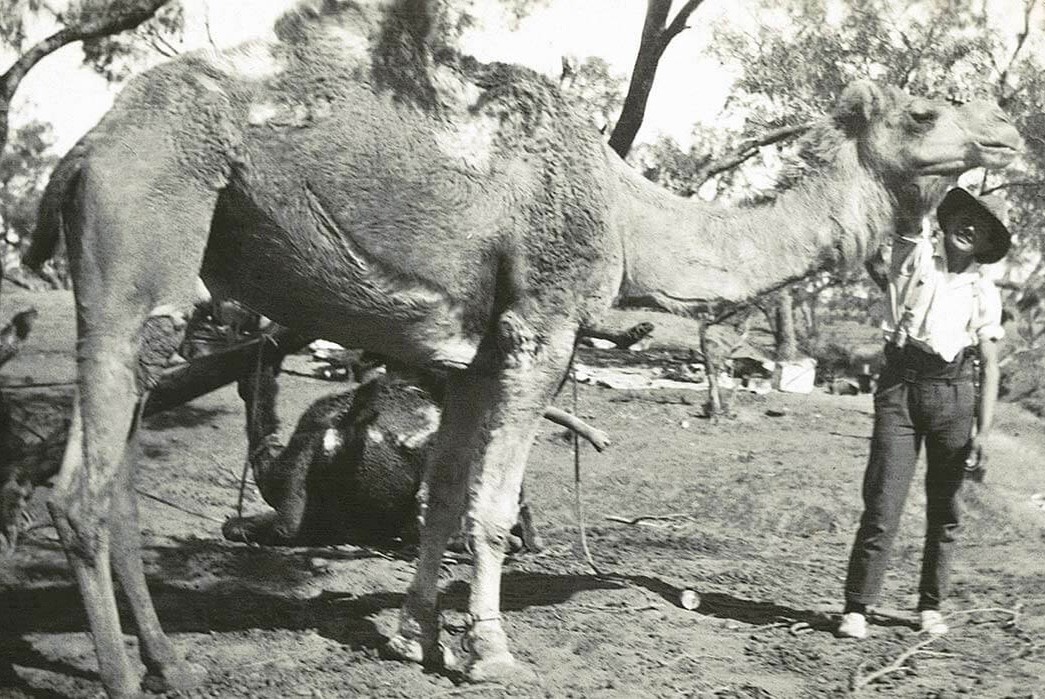
R.M. during his Camel driving years via R.M. Williams.
After three years of trekking, R.M. found himself short for cash, and returned to Adelaide to find more profitable work. It was here where he met his first wife, with whom he returned to the bush to live off the land and start a family. Shortly after returning to the wild, a craftsman named Dollar Mick visited R.M.’s family camp. The pair instantly became friends, and Dollar Mick taught R.M. how to produce more complex leather goods like saddles, bags, and, of course, boots.
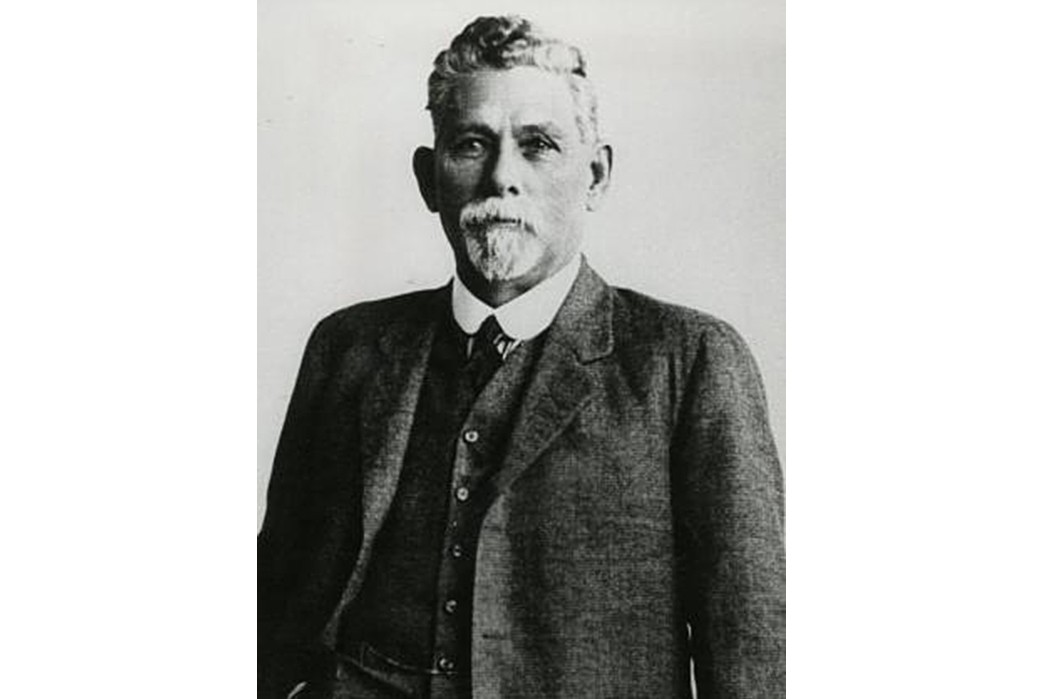
Sir Sidney Kidman via The Advertiser.
In 1932, R.M.’s son contracted a form of eye disease that would incur heavy medical costs, and R.M. needed to come up with some quick cash. The skills and knowledge acquired from Dollar Mick’s masterclasses allowed R.M. to propose a business idea with Sidney Kidman, a wealthy cattle rancher and pastoralist based in Adelaide. Kidman was impressed with R.M.’s leather goods and agreed to have R.M. supply him with leather pack saddles and riding boots. It was this agreement that made 1932 the founding year of R.M. Williams as a manufacturing company.
R.M set up a small factory in his father’s iron wool-shed in Adelaide and got straight to work. His experiences in the outback allowing him to confidently design and produce boots that were suitable for outdoorsmen of Australia. R.M. Williams boots and saddles proved so popular that orders stacked up beyond control, forcing R.M. to take out substantial loans to supply the demand—so much so that he eventually found himself in troublesome debt.

Image via R.M Williams.
But by some stroke of fortune, R.M. managed to purchase shares in a gold mine in northern Australia for a relatively low price, and with his Bushwear business still thriving, R.M. made multiple millions from the gold mine, striking gold shortly after purchasing it.
Over the next few decades, R.M. invested heavily in his company, expanding his range to include Bush equipment, tough moleskin apparel, and blue jeans. It is believed that R.M. was the first businessman to bring blue jeans to Australia. The company expanded in the 1970s, moving its factory to the current location of Salisbury, Adelaide, and in 1978, R.M. Williams opened its first brick-and-mortar store in Toowoomba, just outside of Adelaide.
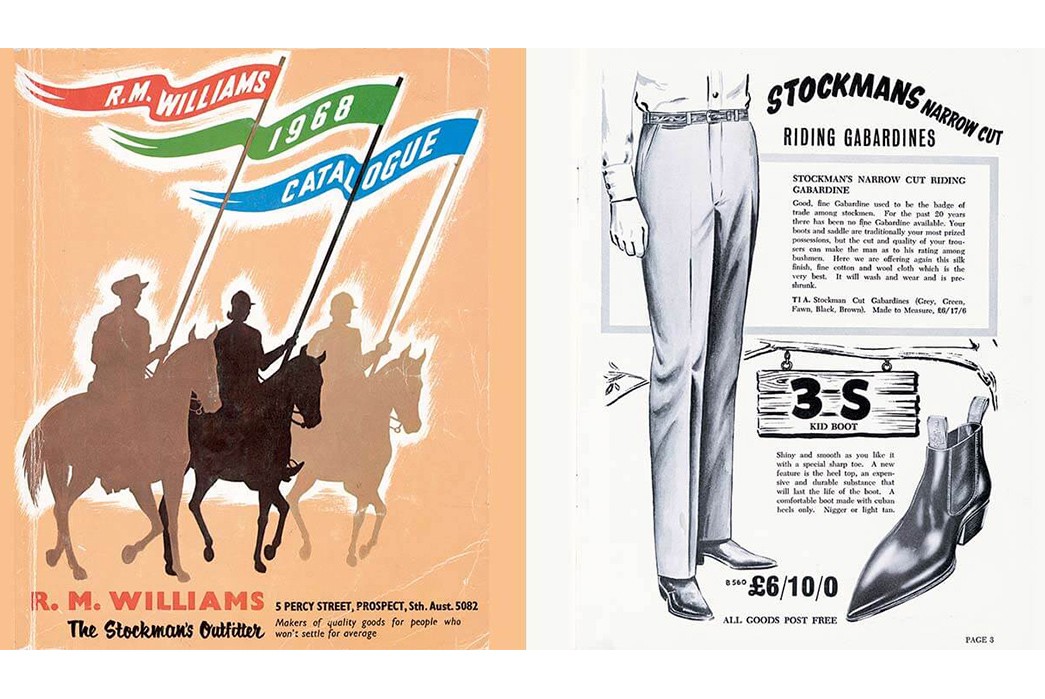
A 1960s R.M. Williams catalogue via R.M. Williams.
Now a wealthy man and Australian celebrity, R.M. was living the high life, but he soon realized the city life was not for him. He abandoned a life of luxury just like he abandoned school all those years ago, and returned to the bush to live off the land. R.M.’s spiritual connection to the Australian Outback is one that would forever resonate with his products, conveying a dedication to quality, hardwearing goods that can be relied upon in the wild.
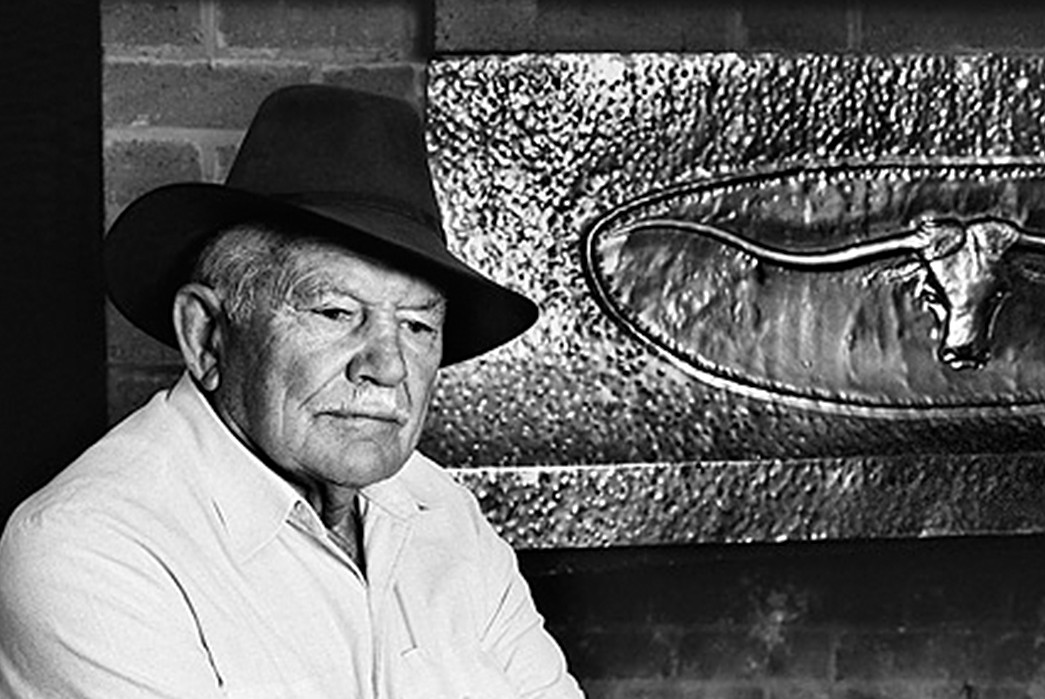
Reginald Murray Williams via The Questrianista.
R.M. Williams Today
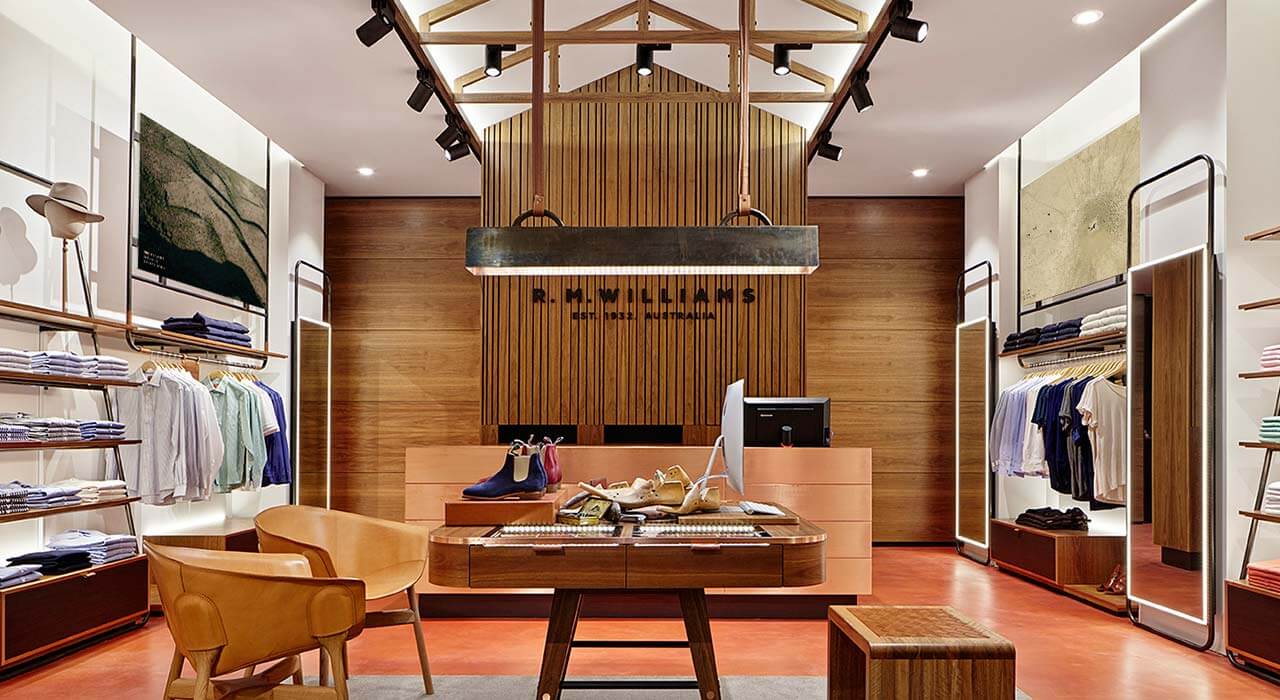
An R.M. Williams boutique.
R.M. Williams continues to manufacture handmade boots in Australia, as well as a whole range of clothing and accessories. Shirts, trousers, raw denim jeans, leather bags, and a full womenswear collection are all part of the R.M. Williams range these days, but their boots are the real heritage mainstay.
After R.M. sold his stake in 1988, the brand has seen a few ownerships and more periods of large debts, leaving the heritage Australian brand flirting with insolvency. In 2013, however, the brand was acquired by LVMH—the luxury goods conglomerate who control subsidiaries such as Fendi, Christian Dior, and Louis Vuitton—and now has 50 retail stores and over 900 stockists worldwide.
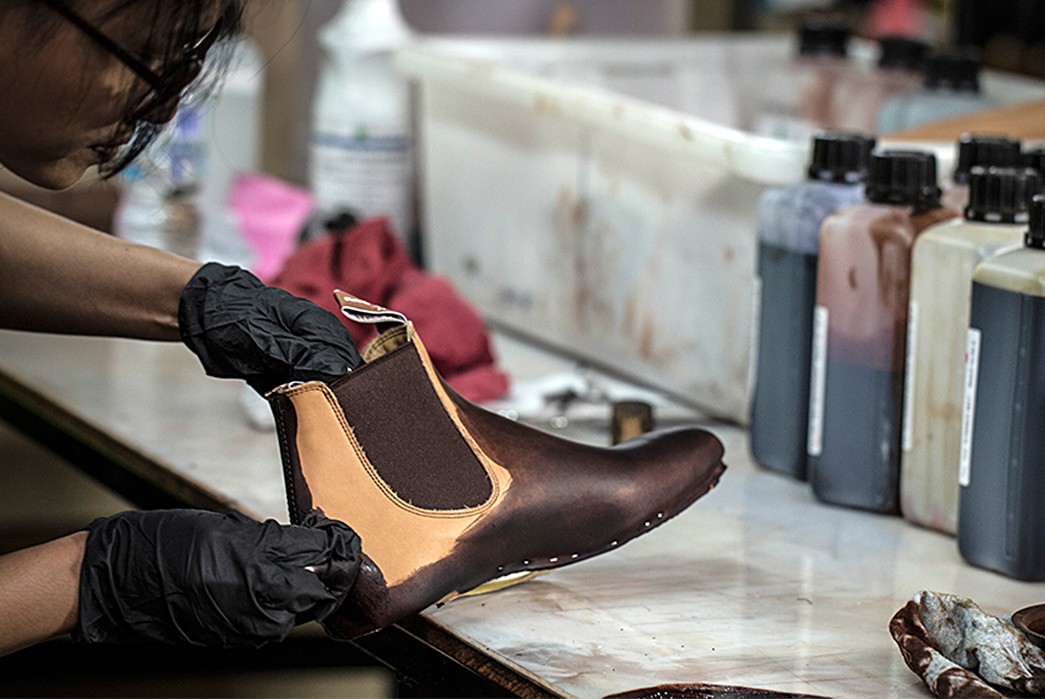
R.M. Williams boots in production via Contentful.
R.M. passed away in 2003, dying an Australian legend known for his entrepreneurship and passion for the outback, and while the brand has fashion house contemporaries these days, his rugged lifestyle still lives on in their product design. Their lookbooks are set in the bush—or the desert—and promote the rugged, outdoor aesthetics that are engrained in the brand’s DNA.
Iconic Products
The Classic RM
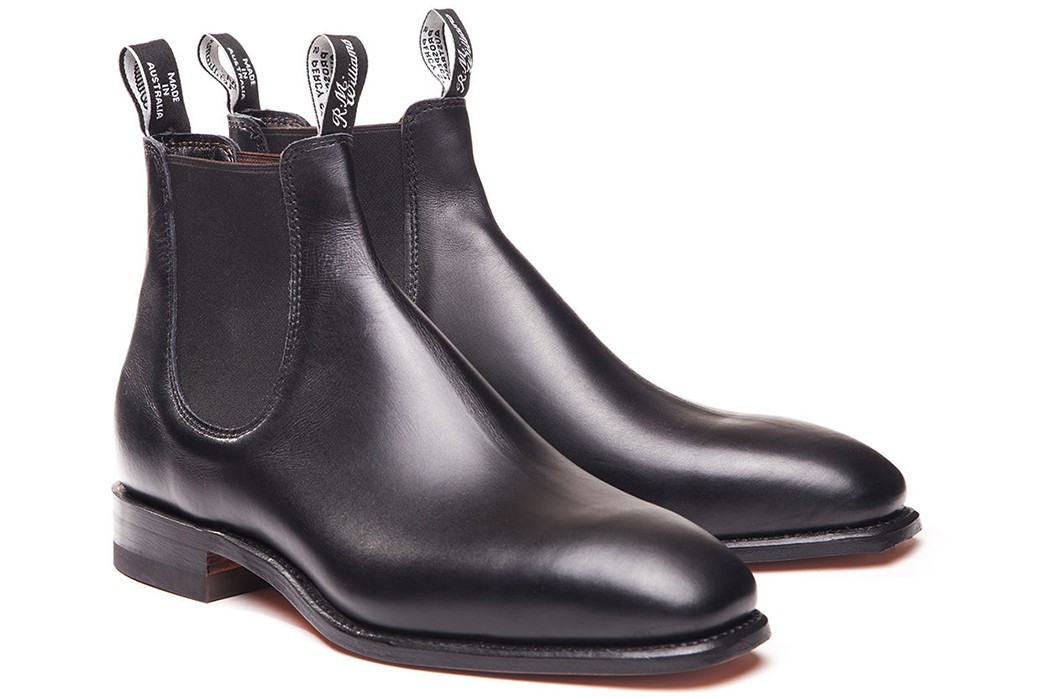
Handmade to order in Australia, the Classic RM is the R.M. Williams’ original craftsman boot. A Chelsea-style boot with an ankle-high shaft and elasticated closures at either side of the ankle, the Classic R.M. is handmade to order in Adelaide, Australia, where R.M. Williams anchors its heritage. With a chisel square toe and low-block heel, these boots are now marketed as a dress shoe, but Goodyear construction and a tough, one-piece leather upper means the Classic RM can adhere to its roots.
Each pair comes complete with branded pull tabs, and signature ‘longhorn’ branding on the leather sole. They are also available with a ‘comfort inner’, making for easier everyday wear.
Available at R.M. Williams for $495.
The Gardener
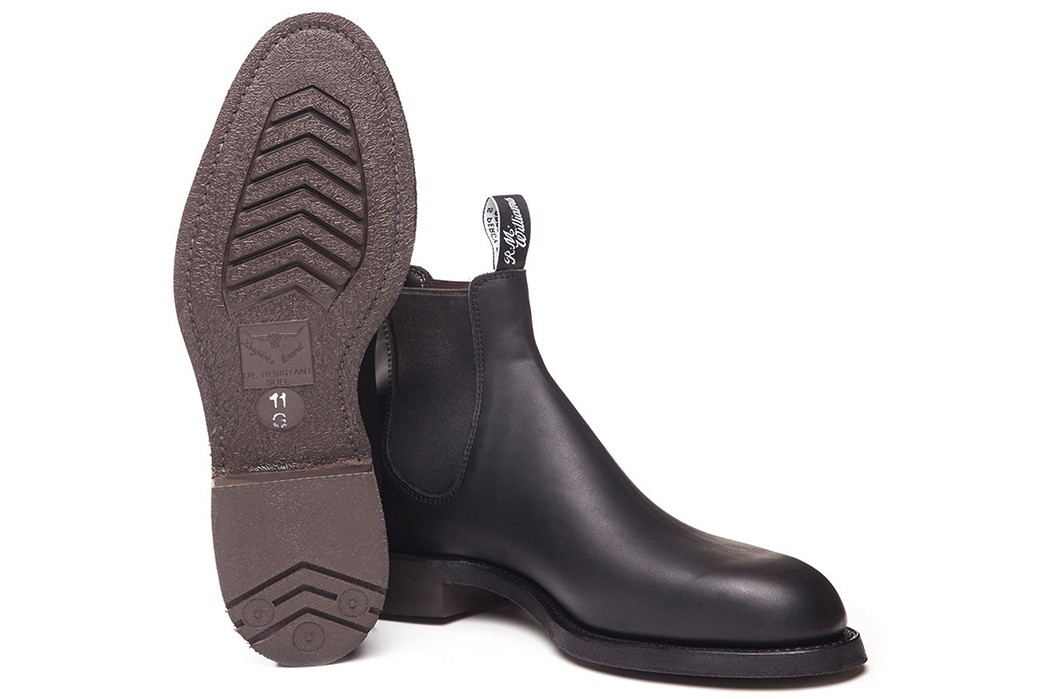
The Gardener boot is R.M. Williams answer to the work boot. Still handmade to order in Adelaide with one-piece leather construction, the Gardener features a higher heel block and a more substantial, treaded welt sole. The Chelsea-style silhouette with elastic gussets and pull-tabs remains (a mainstay of most R.M. Williams boots), but the toe is rounded and roomier than other styles. For a durable finish, the kip leather upper is treated with oil to form a protective barrier from the elements.
Available at R.M. Williams for $495.

